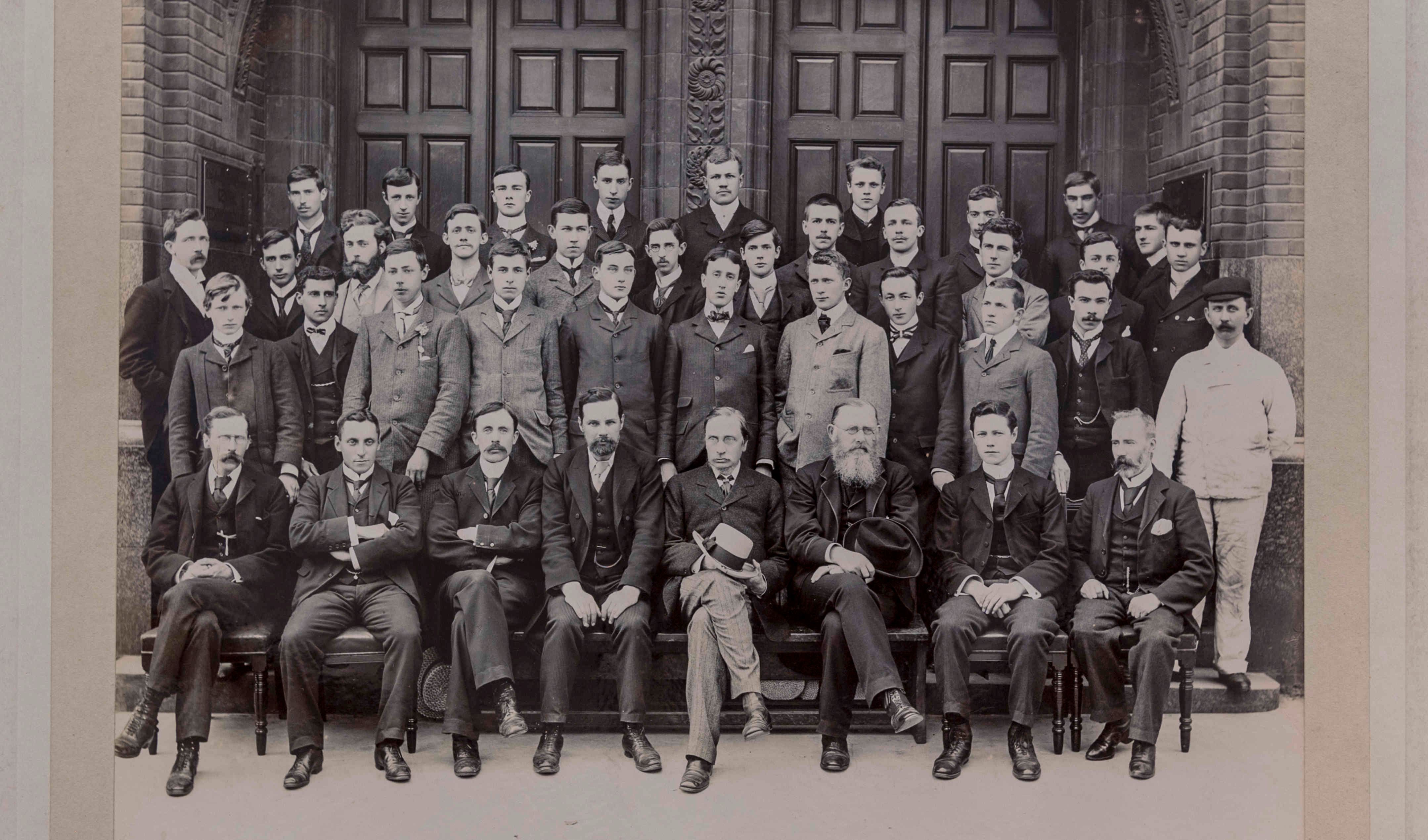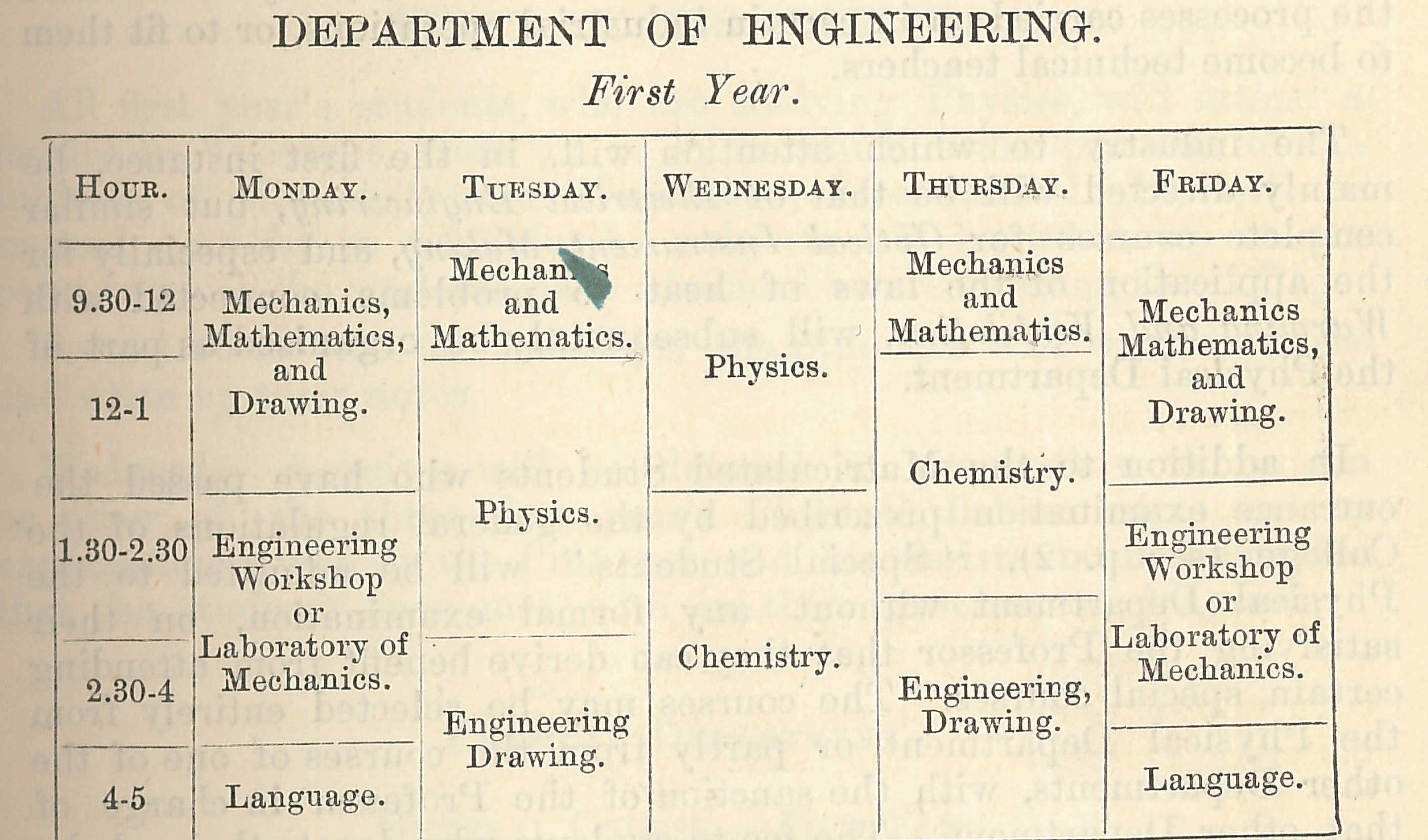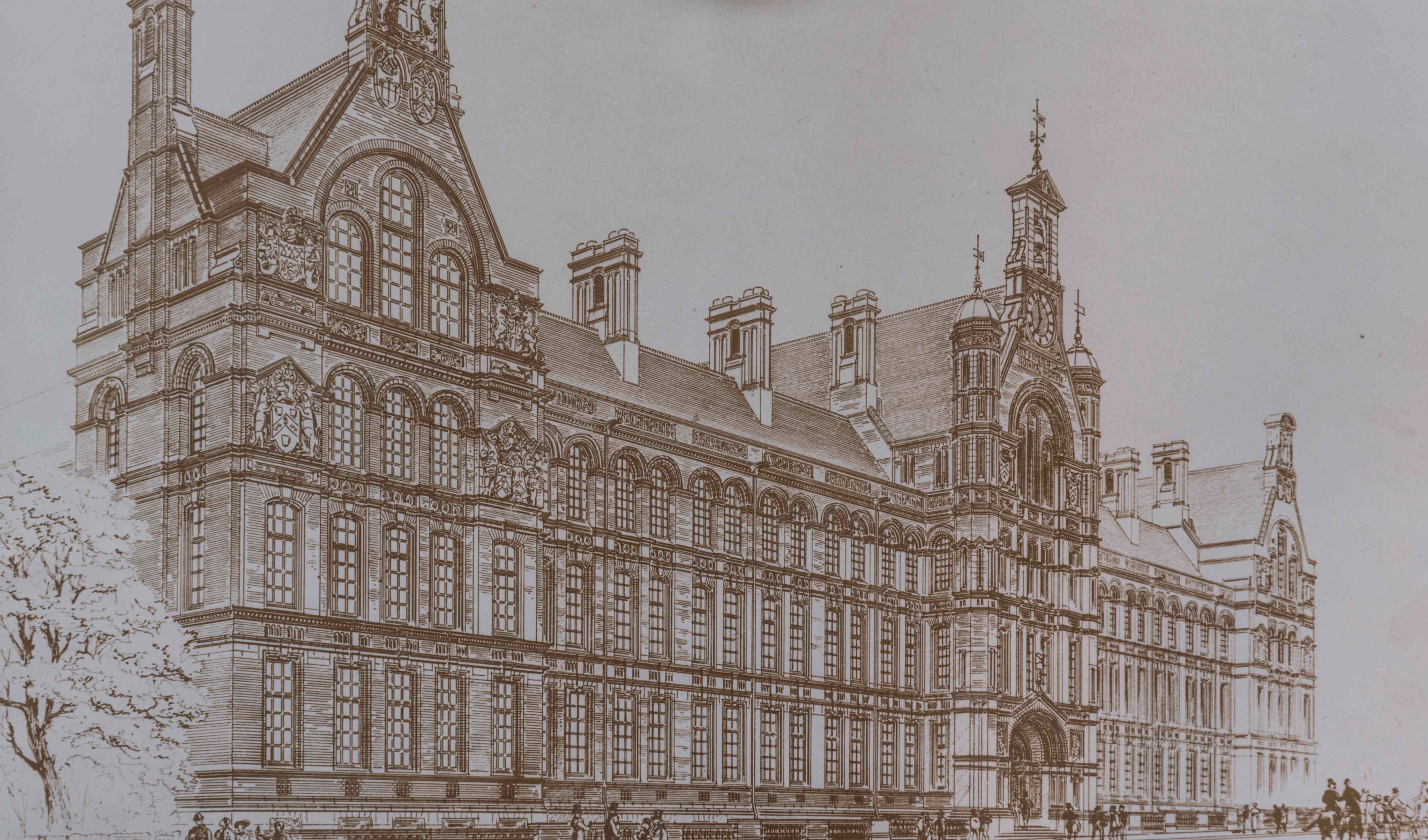Head of Department: William Unwin, Head of Engineering 1884-1906, President of IMechE and ICivE
Teaching
In the 1870s political pressure had been placed on the City of London livery guilds to finance training for “the application of science to various manufacturing industries”2. Professor Unwin was one of four academic founders, specialists in Chemistry, Mechanics & Mathematics, Physics and Engineering, to be tasked with organising teaching.
The General Engineering three year course was originally taught by Unwin, a drawing and design instructor and a mechanic, with Drawing a compulsory subject each year. Workshop classes taught tool use and the principles of metal forging, patterning and fitting. The course had to be revised regularly to keep pace with changes in technology; by 1900 it was described as creating Technical Teachers, Engineers, Architects, and training for those in Manufacturing.
Research
The Department of Engineering then included both Civil and Mechanical Engineering. Unwin’s main interests were materials testing and hydraulics. He worked on the Forth Bridge, Manchester Ship Canal, Mersey Tunnel, Central London Railway and Aswan Dam and internal combustion engines. Unwin was rarely seen without his cigar (including in the labs) and his dog, a Skye terrier.
Meanwhile, In London...
London was the world’s largest city and the capital of the British Empire. The College was part of “a collection of institutions and museums across the whole range of educational endeavour”1 envisioned by Prince Albert following the success of the Great Exhibition in 1851. The College was served by the Metropolitan and District Railway at South Kensington; the pedestrian subway under Exhibition Road opened in 1885, with a penny toll for access to the new museums. The Great Northern, Piccadilly and Brompton Railway opened a deep level platform in 1906.
Photo credits:
Imperial College London archives



